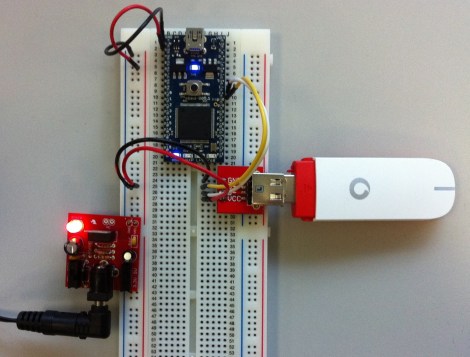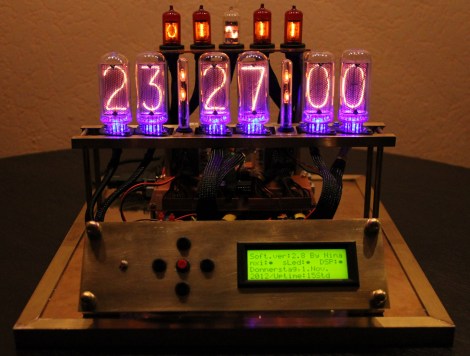
Wow, that’s a really simple hardware setup to supply your device with a 3G Internet connection. Better yet, the software side is just as simple thanks to the Vodafone USB Modem library for mbed. It will work for any of the cell data plans offered by Vodafone. The only problem you may have is not living in one of the 30 countries serviced by the telco.
The dongle seen at the right is sold by Vodafone and is meant to be used for Internet data, so you won’t be doing anything that might get your SIM banned. Connecting to the network is a one-liner thanks to the previously mentioned library. From there, gets and posts can be done with your favorite package. The Hello World example uses HTTPClient. And since the mbed is simply an ARM platform it shouldn’t be hard to use the library with the ARM chip of your choice.
















